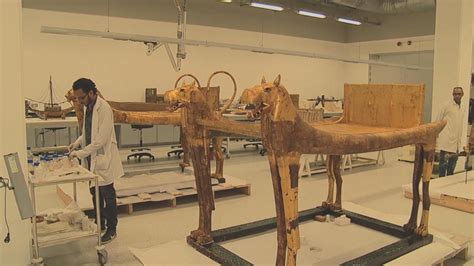The announcement that Egypt is building a $1 billion mega-museum has sparked considerable debate, with opinions ranging from enthusiastic support to staunch skepticism. Set to be one of the world’s largest of its kind, the museum aims to house countless artifacts of ancient Egyptian civilization, drawing tourists from across the globe. Proponents argue that the museum could significantly boost Egypt’s tourism revenue, which has historically been a crucial part of its economy. But at a time when Egypt is grappling with severe financial challenges, is this grandiose project a lifesaver or a potential financial sinkhole?
Egypt’s financial troubles are no secret. With significant investments from other countries such as the UAE and loans from the International Monetary Fund (IMF), the nation is grappling with a complex economic landscape. According to some commenters, the museum could be seen as a gamble—one that might exacerbate Egypt’s financial woes. Indeed, a user on a discussion thread noted that the substantial costs involved in such mega-projects could further strain Egypt’s already overloaded budget. Furthermore, the nation’s investments in other ambitious projects, such as a new administrative capital, add another layer of financial burden.
Yet, supporters counter with compelling arguments. According to available statistics, Egypt is one of the world’s most popular tourist destinations, with millions visiting landmarks like the Pyramids of Giza annually. A mega-museum could potentially attract a significant portion of these visitors, translating into robust ticket revenue. As some pointed out, this revenue might not only cover the initial investment but also bring long-term financial benefits. For instance, even a modest ticket price combined with high visitor numbers could quickly add up to a substantial sum.Read more on this topic here.
However, the financial viability of this endeavor greatly depends on effective management and execution. Critics argue that Egypt’s track record on large-scale projects isn’t stellar. Historical episodes, such as the underperformance of the Suez Canal expansion in terms of revenue, serve as cautionary tales. Another concern is the significant cost of constructing a new administrative capital. These projects could collectively drain resources, leading to a situation where the country might find itself overleveraged and unable to meet other critical needs.
On the cultural front, the mega-museum represents a monumental step in reclaiming and preserving Egypt’s rich heritage, affirming its role in global history. The museum is not just a building filled with ancient relics; it aims to redefine how the world sees Egypt and how Egyptians see themselves. While some skeptics fear that moving these precious artifacts might put them at risk, supporters are optimistic that this could place Egyptology back in an Egyptian context, steering the narrative away from foreign institutions. This museum promises to be a cultural treasure trove that could inspire future generations, both locally and globally.
In summary, Egypt’s $1 billion mega-museum project is a double-edged sword. On one hand, it offers remarkable opportunities for economic revitalization through tourism, along with cultural restoration. On the other hand, it poses significant financial risks, especially in an already strained economic environment. Ultimately, the project’s success hinges on meticulous planning, transparent management, and the ability to attract and sustain a high level of tourist interest. Whether it serves as a financial boon or a burden will largely depend on how these factors play out. As Egypt forges ahead with this ambitious endeavor, the world’s eyes will be watching closely to see if it becomes a beacon of success or a cautionary tale.


Leave a Reply